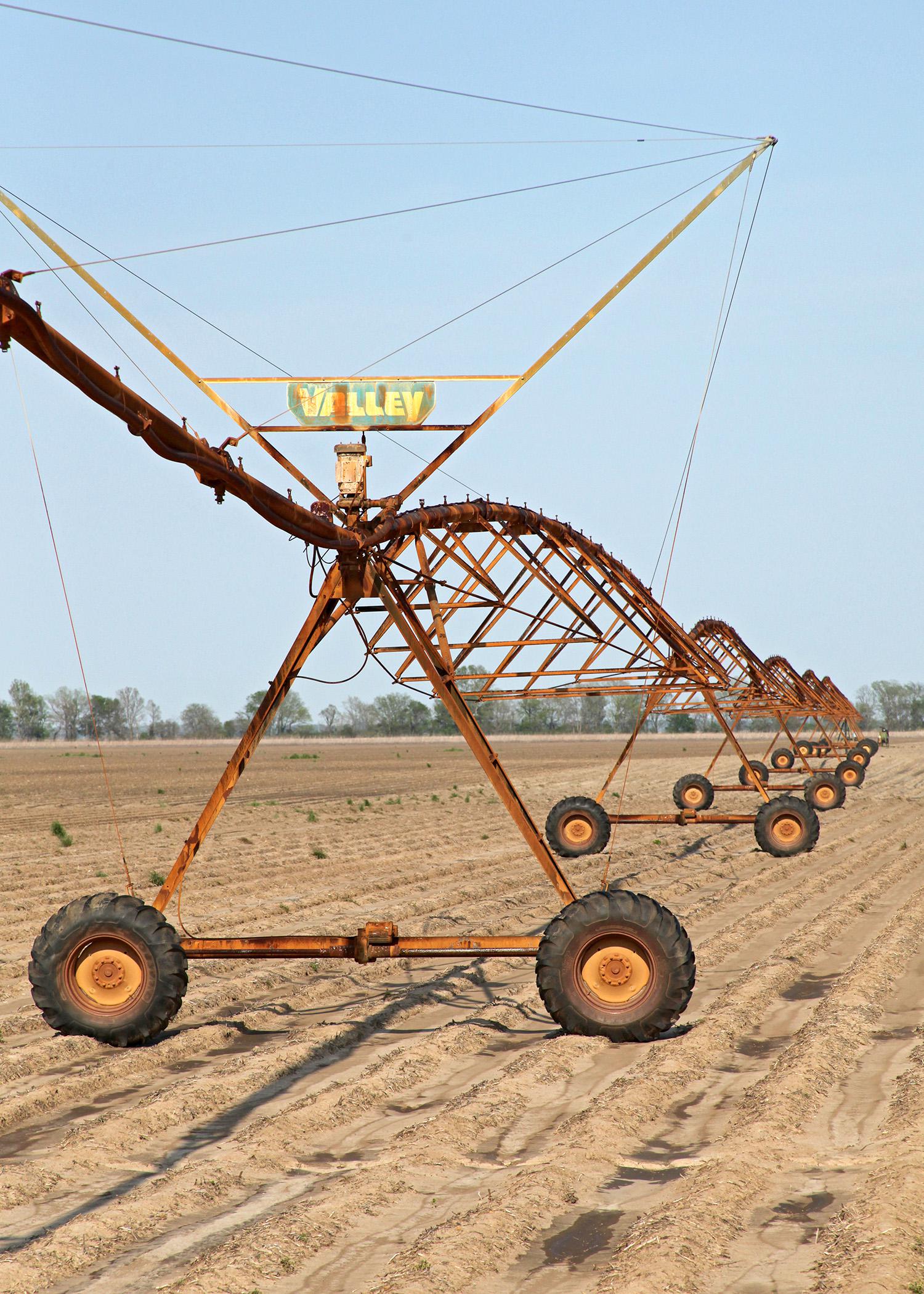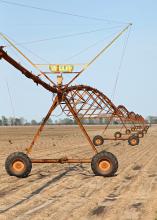Information Possibly Outdated
The information presented on this page was originally released on May 5, 2014. It may not be outdated, but please search our site for more current information. If you plan to quote or reference this information in a publication, please check with the Extension specialist or author before proceeding.
Moisture sensors can fine-tune irrigation
MISSISSIPPI STATE – Recent high profits in farming have made it possible for many Mississippi growers to install irrigation systems, and Mississippi State University researchers are urging the producers to install soil moisture sensors at the same time.
“You probably spend well over $100,000 putting in an irrigation system, but if you don’t have anything looking into the soil profile, you won’t know how much water you have and when you need to irrigate,” said Jason Krutz, irrigation specialist with the MSU Extension Service. “It’s the equivalent of buying a Ferrari and knocking out the gas gauge and going on a long trip.”
Much of the Delta, the state’s primary region for row crop production, is irrigated. Producers use in-furrow irrigation systems on the majority of this land. Much of the rest of the state’s row-crop acreage is in the area known as the hills in northeast Mississippi. This farmland uses pivot irrigation, which Krutz called the most cost-effective irrigation system available.
“They’ve not had irrigation capacity in the hills before, and growers there are putting pivots in left and right,” Krutz said. “It’s exploded in the last few years as growers have had the capital and are reinvesting in irrigation.”
Krutz called irrigation a wise investment tool because it allows greater stability in crop production by reducing yield variability.
Larry Falconer, Extension agricultural economist at the Delta Research and Extension Center in Stoneville, said corn and soybean prices were strong from 2009 to 2013.
“Irrigated corn and soybean production in Mississippi has generally been profitable enough over that timeframe to generate cash flows that can support investments to increase acreage under irrigation,” Falconer said. “In most years, irrigation prevents stress from lack of moisture at critical stages of plant growth.”
MSU crop budgets are a tool producers use to estimate their net returns above many expected expenses. For 2014, MSU agricultural economists estimated returns of $152 per acre for dryland corn and $159 per acre for irrigated corn. The difference is much more dramatic for soybeans, with an estimated return above expenses of $178 per acre for dryland soybeans and $330 per acre for irrigated soybeans.
Irrigation has the ability to dramatically increase yields, but Krutz is urging growers to use it as efficiently as possible.
“Research shows that most places with irrigation capacity over-irrigate,” Krutz said. “When you drop soil moisture sensors in, you can often reduce water use by up to 50 percent. You have a fuel savings and in some situations, actually improve your yield.”
In the hills region of the state, growers rely on on-farm reservoirs rather than wells to supply the water for irrigation. Krutz said many growers only have enough storage capacity to put 6 to 8 inches of water out per acre all year. This limitation makes soil moisture sensors even more important.
“It may take 9 to 13 inches of water to give the crop what it needs in one season, depending on when they get rain,” Krutz said. “If they are over-irrigating, they could be out of water by the time the crop gets to a sensitive growth stage and really needs it.”
Dennis Reginelli, Extension agronomic regional Extension specialist in Oktibbeha County, said the majority of the irrigation in east Mississippi is in Noxubee County, with some acreage in Lowndes, Monroe and Chickasaw counties.
“Noxubee County has doubled in irrigation acreage in the last two to three years,” Reginelli said. “Several companies are staying really busy putting in different sizes of pivot irrigation.”
Reginelli said pivots are ideal for the terrain in east Mississippi. Soil moisture sensors will help growers know when to time their applications of water.
“Our growers are getting a better understanding of how soil moisture sensors fit into their operations,” he said. “I see their use increasing as growers get a better handle on how they operate and can time irrigations to maximize the water usage and efficiency of the pivots.”







